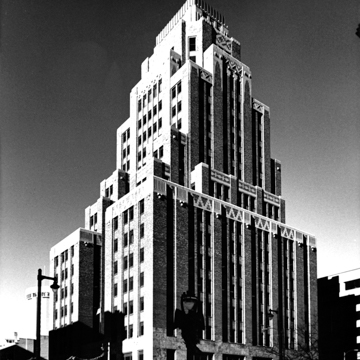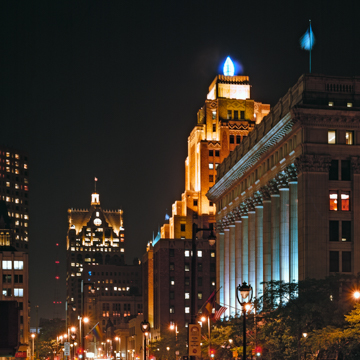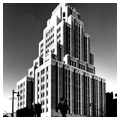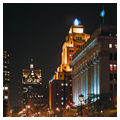Stepped massing, strong vertical emphasis, and geometric decoration make this twenty-story building a textbook example of Art Deco. Unlike the U.S. Bank Center (MI15) this is not a box. Its U-shape enabled daylight and air for summertime ventilation to reach desks in the days before air-conditioning. The setbacks enhance the buildings’ verticality, as do the pilasters that soar uninterrupted between the windows. Here, an added effect is the gradual change in brick color from deep red in the lower courses to pink and finally buff at the structure’s apex. Extensive terra-cotta, copper, and brick ornament on cornices and stringcourses include chevrons, zigzags, and other geometric decorations in low relief. The spandrels between the windows are finished with copper panels, each stamped in a sunburst design.
The large flame-shaped beacon, added in 1956, is a Milwaukee landmark that signals imminent changes in the weather. Red denotes warm weather ahead, a flickering flame warns of snow or rain, gold means cold, and blue indicates no change expected.












